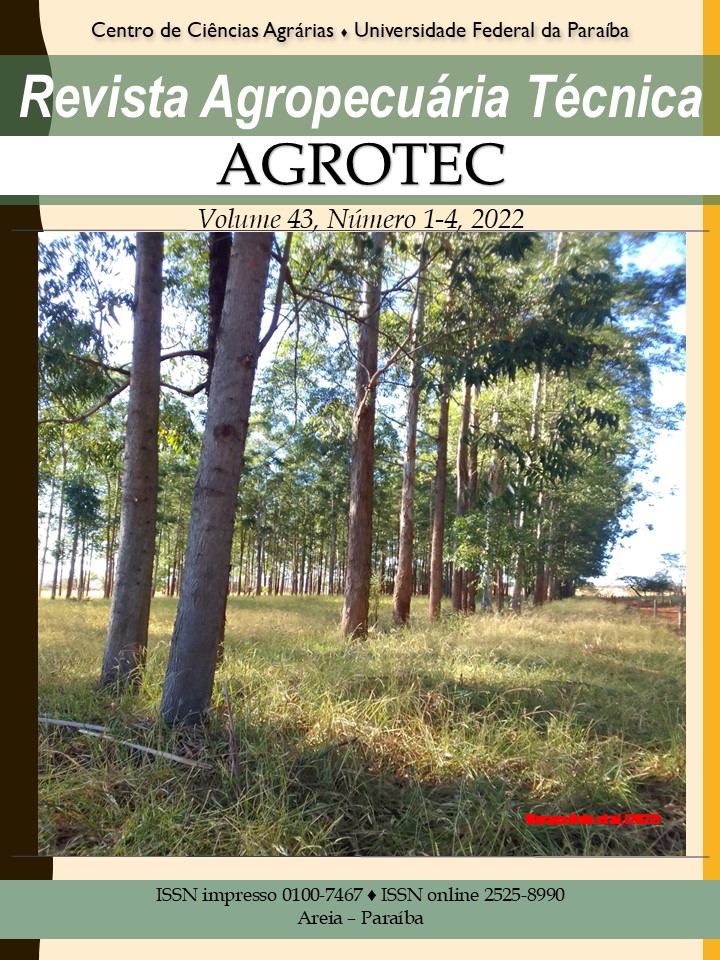Compatibilidade de enxertia do tomateiro sobre porta-enxertos selvagens e seus efeitos sobre a produtividade
DOI:
https://doi.org/10.25066/agrotec.v43i1-4.61980Palavras-chave:
Fenda-cheia, Solanum aculeatissimum, Solanum paniculatumResumo
A enxertia de plantas é uma técnica que visa unir duas partes de plantas diferentes, porta-enxerto e enxerto, para formar uma planta. A enxertia permite combinar um sistema radicular vigoroso com um enxerto de interesse comercial. Dessa forma, o objetivo desse trabalho foi avaliar a compatibilidade do tomateiro (Solanum lycopersicum L.) com porta-enxertos selvagens Solanum paniculatum (jurubeba) e Solanum aculeatissimum (joá). Para tanto, sementes do tomateiro e dos porta-enxertos foram semeadas em bandejas de poliestireno de 128 alvéolos preenchidos com substrato comercial à base de casca de pinus. Aos 15 dias após a semeadura, quando as plantas apresentavam de 3-5 folhas totalmente expandidas, as enxertias foram realizadas por fenda-cheia e a fixação entre porta-enxerto e enxerto foi realizada com grampos de enxertia para as Solanáceas. As plantas foram acomodadas em câmara úmida até a completa cicatrização, cerca de 14 dias. Após a cicatrização, as plantas enxertadas e não enxertadas foram transplantas para casa de vegetação. Foram avaliadas a porcentagem de sobrevivência e produção das plantas. Empregou-se o delineamento em blocos casualizado com três tratamento (plantas de tomateiro não enxertadas, porta-enxerto Solanum paniculatum e Solanum aculeatissimum) e dez repetições. Verificou-se elevada sobrevivência de plantas enxertadas. Além disso, todos os tratamentos apresentaram número semelhante de frutos. No entanto, o diâmetro e a massa de frutos foram reduzidos em função da enxertia, especialmente em plantas enxertadas sobre joá. Concluímos que houve compatibilidade do tomateiro com os portas-enxertos, mas ocorreu uma redução na produtividade do tomateiro em função da menor massa e diâmetro de frutos.


